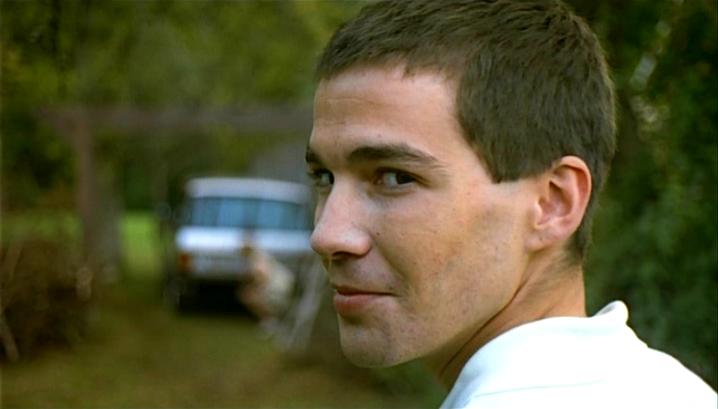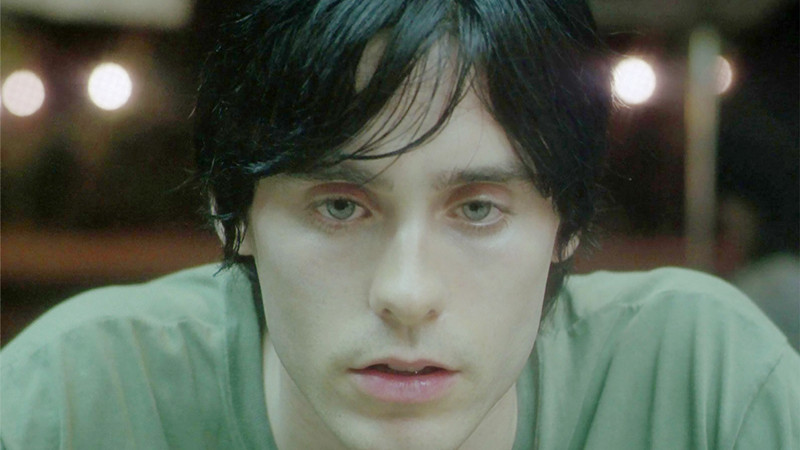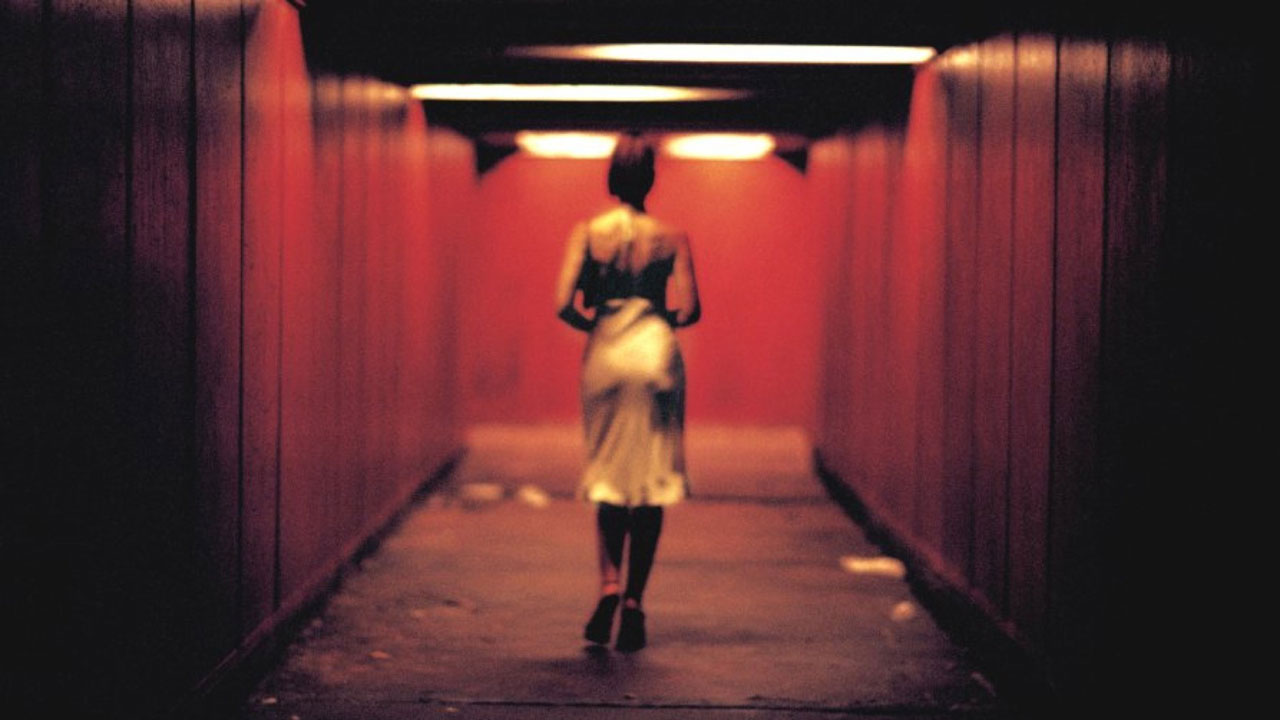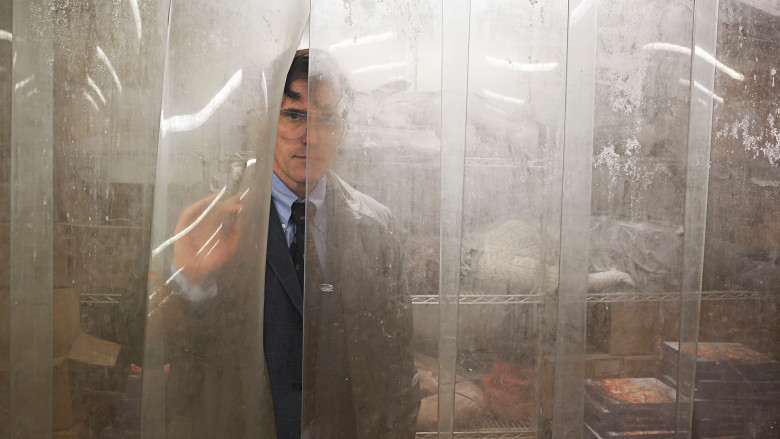6. Funny Games (Michael Haneke, 1997)

Funny Games is a masterpiece created by the virtuoso Austrian director Michael Haneke. This work of art offers viewers a unique and chilling experience, prompting them to contemplate the delicate boundaries of violence, morality, and their influence on our perception of the world.
In the film’s plot, we are immersed in the life of a privileged family, becoming witnesses to unsettling events unfolding within their home. A pair of young men, Paul and Peter, intrude into their world, distorting it and perpetrating irreparable harm. Haneke fearlessly raises questions about morality, psychology, and the forces of dark power that threaten ordinary and safe lives.
Funny Games is a true masterpiece of cinematic art, where each frame and each scene are meticulously crafted to create a haunting and grim atmosphere. Haneke’s distinct stylistic features, such as long, persistent shots and naturalistic acting, interact to evoke in the viewer a sense of inevitable distrust and helplessness in the face of a mounting threat.
By addressing important questions about the influence of cinema on the viewer, Funny Games penetrates the depths of our consciousness. It elicits emotional reactions, prompts us to reflect on the role of film in shaping our worldview, and makes us aware of how forces of evil can impact us through works of art. While Funny Games is not intended for the faint of heart, its artistic significance and high level of execution cannot be underestimated. The film has garnered critical acclaim and rightfully holds a distinguished place in the history of cinema. It challenges us, forcing us to confront our own fears and doubts.
Funny Games is a work that will make you clench your fists and hold your breath. It requires an open mind and readiness for an intense immersion into the dark world of artistic cinema. If you will accept the challenge, you will embark on a unique and stunning cinematic journey that will leave an indelible mark on your thoughts and heart.
7. Requiem for a Dream (Darren Aronofsky, 2000)

Movies that have the power to stir our nervous system and saturate our thoughts with anxiety and horror deserve special attention. They allow us to see the dark and sinister sides of human nature. Requiem for a Dream is a film that skillfully captures the atmosphere of fear and presents a merciless story of four characters who confront their own demons.
Requiem for a Dream captivates the viewer with its aesthetic depth and meticulous execution, making it a true masterpiece in the realm of contemporary cinema. Darren Aronofsky, as the director, takes on the role of a connoisseur of human psychology, using dynamic editing, bold transitions, and innovative screen splitting to entangle the viewer in a web of anxiety and hysteria. The journey into the depths of the characters ’souls allows us to uncover the reality of deadly addiction.
The central theme of the film becomes drug addiction, which serves as the main antagonist and embodies the most horrifying fear. Harry, Marion, Sara, and Tyrone, the main characters, are symbolic victims of an apocalyptic force that destroys their lives and dreams. The characters ’attempts to make desperate choices and break free from the chains of drugs create an atmosphere of inevitability and impending catastrophe.
The film evokes a sense of discomfort and unease in the viewer, delving into the depths of the subconscious and invoking a sense of profound absurdity in life and disillusionment. The interplay of intense emotions and psychological tension in an unrelenting stream of scenes is so overwhelming that we feel an inevitable closeness to the edges of reality.
Requiem for a Dream is a provocative film that deeply explores addiction and ignites fear of its catastrophic consequences. Darren Aronofsky expertly combines visual symphony with distressing motifs, leaving the viewer in awe of his mastery. The inevitable emotional journey that the film takes us on reveals new aspects of the human psyche and leaves no one indifferent.
8. Irréversible (Gaspar Noé, 2002)

Gaspar Noé, a filmmaker known for his experimental approach to filmmaking, offers something truly unique in his work Irreversible, released in 2002. This film evokes unease and frightens with its depth and ruthlessness, making it an unforgettable cinematic masterpiece.
One of the key features of Irreversible lies in its unconventional chronological structure. Noé intentionally places the events in reverse order, starting with the devastating consequences and tracing back to their origins. This artistic technique creates a mounting tension, anxiety, and helplessness in viewers as they witness the inevitable tragedies unfolding before their eyes.
The superb performances presented in Irreversible deserve special recognition. Vincent Cassel, Monica Bellucci, and Albert Dupontel embody their roles with absolute mastery, delivering profound emotional performances to the viewers. Their genuine passion and vulnerability permeate every scene, intensifying the sense of helplessness and shock of what transpires. However, it should be noted that Irreversible is a film that elicits strong emotional reactions. Noé does not shy away from depicting violence in all its cruelty and realism. Some scenes may be uncomfortable and shocking, rendering the film unsuitable for more sensitive viewers. Yet, it is precisely these moments that are part of the artistic concept aimed at creating a powerful emotional impact.
Irreversible is a film that carries not only entertainment but also a philosophical weight. It explores the theme of time and the inexorable passage of it, drawing attention to human vulnerability and the randomness of fate. The film prompts viewers to contemplate the consequences of their actions and the impossibility of changing the past. Irreversible is a distressing and stunning cinematic work that leaves an indelible impression. Gaspar Noé and the ensemble cast have achieved the highest form of artistry, offering viewers an immersion into a world of tragedy and emotional catharsis.
The film demands active engagement and prompts profound reflection. It serves as a prime example of how cinema can impact our emotions and thoughts, leaving an enduring mark after viewing. Dive into this film and prepare for a striking and memorable journey into the depths of the human soul.
9. Dogtooth (Yorgos Lanthimos, 2009)

In the repertoire of global cinema, Dogtooth, by Yorgos Lanthimos, stands out with its unique perspective on the distortion of reality. We are presented with a film where the familiar boundaries of the world blur, allowing the viewer to reconsider the limits of their perception. Lanthimos masterfully crafts a closed-off world, filled with sounds, colors, and images that initially glance seem familiar to us, but soon turn into cryptic symbols. It is a spectacle of a unique experiment in the human mind, where every detail, every dialogue, compels you to reflect on our vulnerability to manipulation.
The confined space of the film mirrors our own desire to shield ourselves from the outside world, showing the lengths a person might go to create an ideal reality. From this arises questions about the value of free choice, about how we form our beliefs, and who or what can alter them. Dogtooth is not just a cinema. It is a challenge to our perception, an invitation for reflection, and an attempt to understand how deeply the roots of our beliefs penetrate our subconscious. Being both unsettling and captivating, Lanthimos ’film is a must-watch for those ready to look beyond the boundaries of the familiar world and discover uncharted horizons of perception.
10. The House That Jack Built (Lars von Trier, 2018)

And what list of disturbing films would be complete without Lars von Trier? The great Danish film director once again astounds us with his work of art, The House That Jack Built. In this artistic masterpiece, the viewer can expect a unique and immersive experience that boldly weaves thriller and psychological drama. At the core of the film is the story of Jack, whose obsession with murder spans a whole decade. Lars von Trier, known for his technical prowess and insightfulness, surprises the audience with the exceptional depth of visual language, revealing the darkest corners of Jack’s psyche. Each murderous act becomes not only a sinister capsule of tension, but also an insightful window into the mind of a person pushed beyond the limits of normalcy.
The House That Jack Built is a film that demands courage from its audience. The director skillfully crafts a visual tapestry infused with symbolism and profound meaning, eliciting powerful emotional reactions. He pushes the boundaries of traditional cinema, leading us to contemplate the nature of fear, evil, and the limits of art. Opinions among critics about The House That Jack Built have been divided. However, this is an integral part of the film’s uniqueness.
Lars von Trier’s magnificent work prompts reflection and sparks lively debates about the value and meaning of art, and its ability to evoke dissonance and emotional fluctuations. Regardless of the viewer’s position, one cannot dispute the genius and artistic mastery of The House That Jack Built. This film offers us a captivating and intense cinematic journey into the depths of the human psyche, compelling us to contemplate our own nature and fears. Lars von Trier continues to push the boundaries of cinematography, offering us a unique and unparalleled experience that challenges our perceptions of disturbing and alarming films.